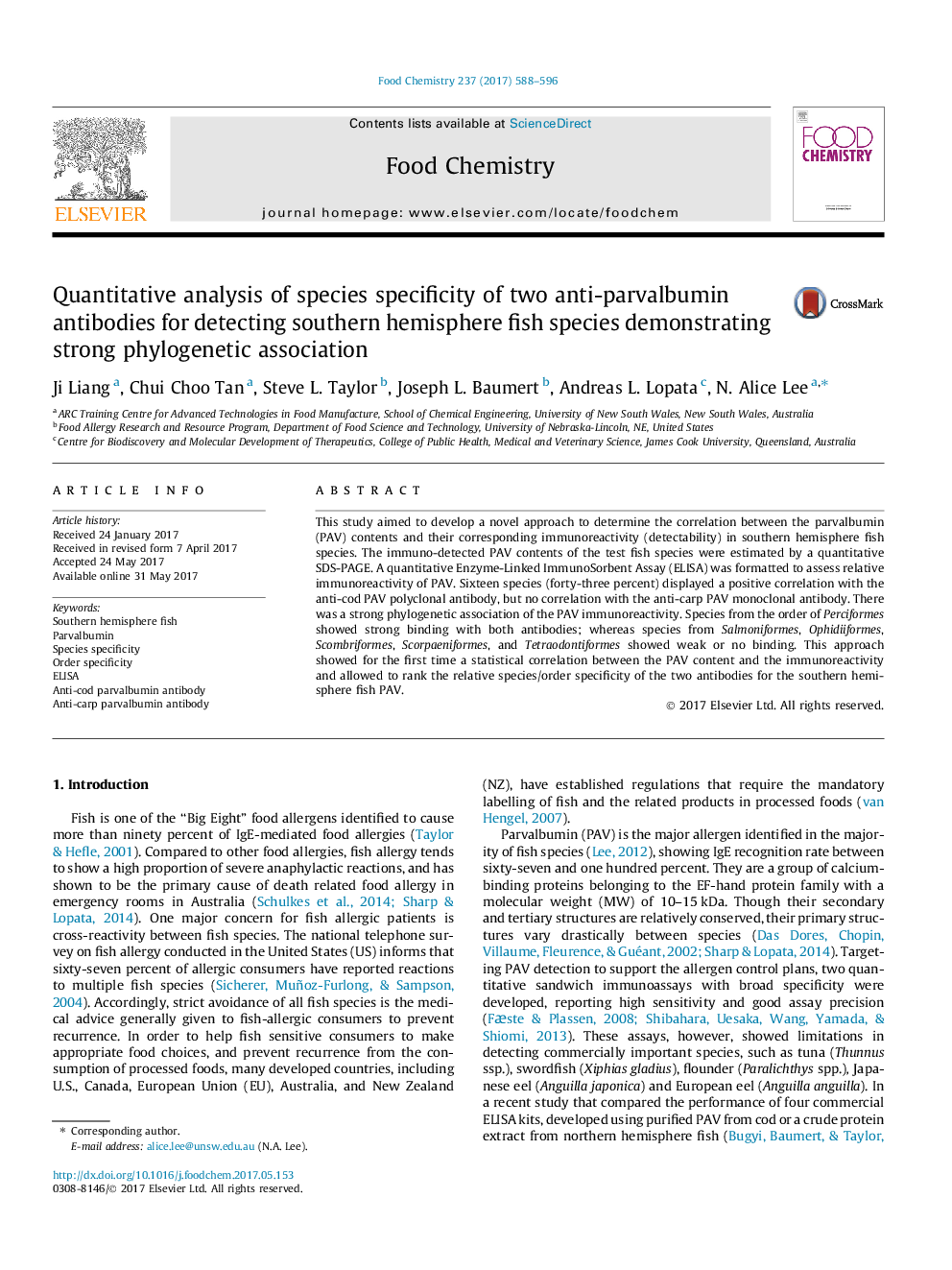| Article ID | Journal | Published Year | Pages | File Type |
|---|---|---|---|---|
| 5132755 | Food Chemistry | 2017 | 9 Pages |
â¢A statistical correlation between PAV content and the immunoreactivity was established.â¢The PAV immunoreactivity showed a strong phylogenetic association.â¢43% of test species showed a positive correlation between PAV content and the immunoreactivity with the anti-cod parvalbumin polyclonal antibody.â¢No correlation between PAV content and the immunoreactivity was found with the anti-carp parvalbumin monoclonal antibody.
This study aimed to develop a novel approach to determine the correlation between the parvalbumin (PAV) contents and their corresponding immunoreactivity (detectability) in southern hemisphere fish species. The immuno-detected PAV contents of the test fish species were estimated by a quantitative SDS-PAGE. A quantitative Enzyme-Linked ImmunoSorbent Assay (ELISA) was formatted to assess relative immunoreactivity of PAV. Sixteen species (forty-three percent) displayed a positive correlation with the anti-cod PAV polyclonal antibody, but no correlation with the anti-carp PAV monoclonal antibody. There was a strong phylogenetic association of the PAV immunoreactivity. Species from the order of Perciformes showed strong binding with both antibodies; whereas species from Salmoniformes, Ophidiiformes, Scombriformes, Scorpaeniformes, and Tetraodontiformes showed weak or no binding. This approach showed for the first time a statistical correlation between the PAV content and the immunoreactivity and allowed to rank the relative species/order specificity of the two antibodies for the southern hemisphere fish PAV.
